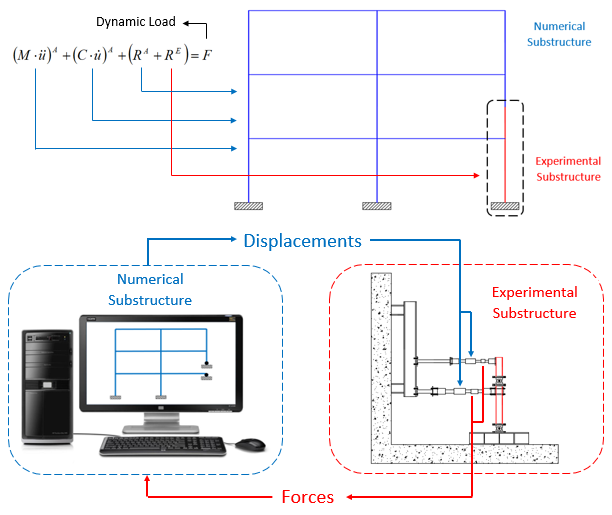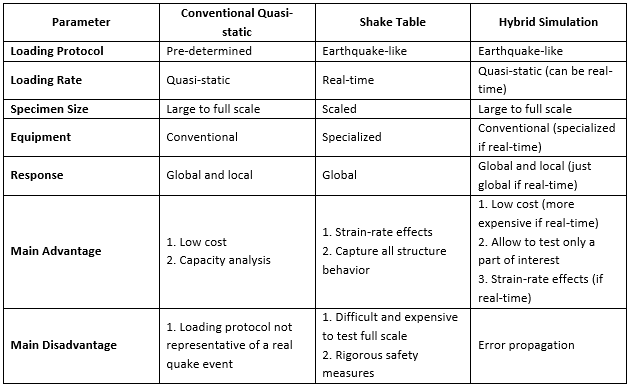The information and work presented here is part of the M.S. thesis of graduate student Lemuel González Hernández under the guidance of Dr. Cortés-Delgado, titled Development of UPRM hybrid simulation facilities for dynamic analysis, to be published on the Fall of 2018.
Hybrid simulation test (HST), also known as pseudo-dynamic test, hardware-in-the-loop simulation, or virtual prototyping, is a computer controlled technique that combines physical testing and analytical models to analyze the behavior of structures subjected to dynamic loads, usually seismic loads [1]. This method is similar to a conventional quasi-static test but differs in the loading protocol. The loading protocol, which can be displacements or forces, are not predetermined but calculated by a numerical analysis that runs simultaneously with the experimental test.
The hybrid simulation test can be quasi-static or real-time depending on the loading rate. Quasi-static simulation applies the loading protocol in a step-to-step manner, at a much lower rate than a real event. The real-time hybrid simulation uses a one-to-one time scale loading protocol to evaluate components that contributes in damping and inertia. In general, real-time hybrid simulation is more adequate for earthquake engineering while quasi-static tests are carried out to study structural performance of structures and structural members such as resistance, propagation of cracks, collapse mechanism and levels of damage when they are subjected to cyclic loads [2].
The hybrid simulation method is based in the pseudo-dynamic testing method developed by Takanashi (1975) about 40 years ago. Nakashima and Takaoka (1992) introduced improvements to pseudo-dynamic testing giving way to the hybrid simulation test or hybrid technique [3]. In terms of control theory terminology, it can be described as a closed-loop feedback system [1]. The process, illustrated in Figure 1, starts with the prediction of the displacements by the numerical analysis. The displacements are sent to the control system and imposed to the structure by means of hydraulic actuators. The forces produced in the structure are measured and fed back to the numerical model to compute the displacements for the next step.


